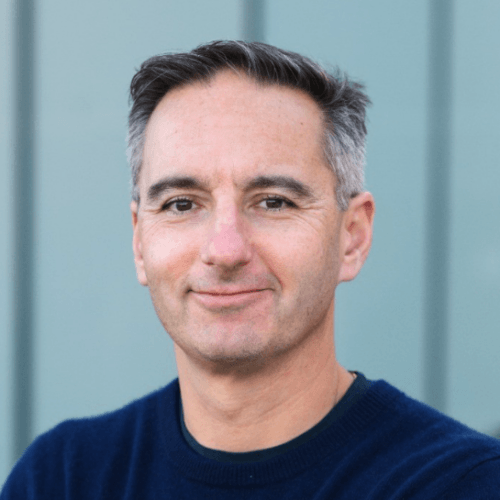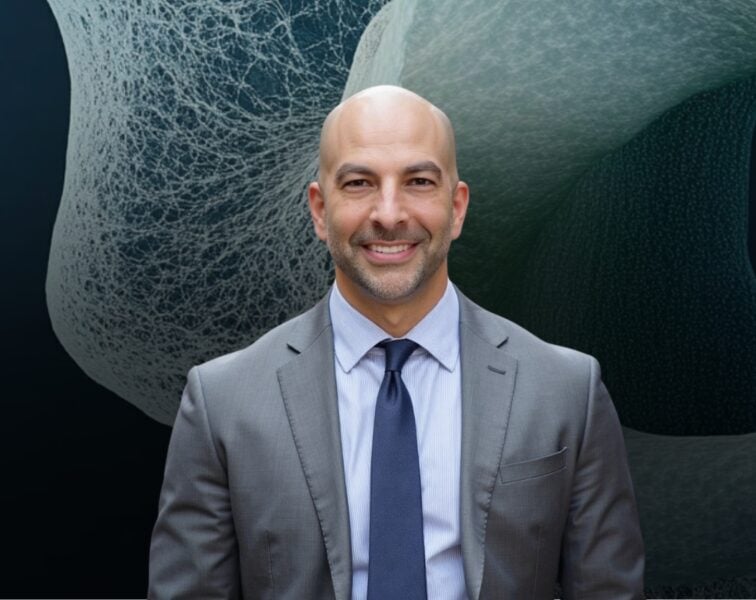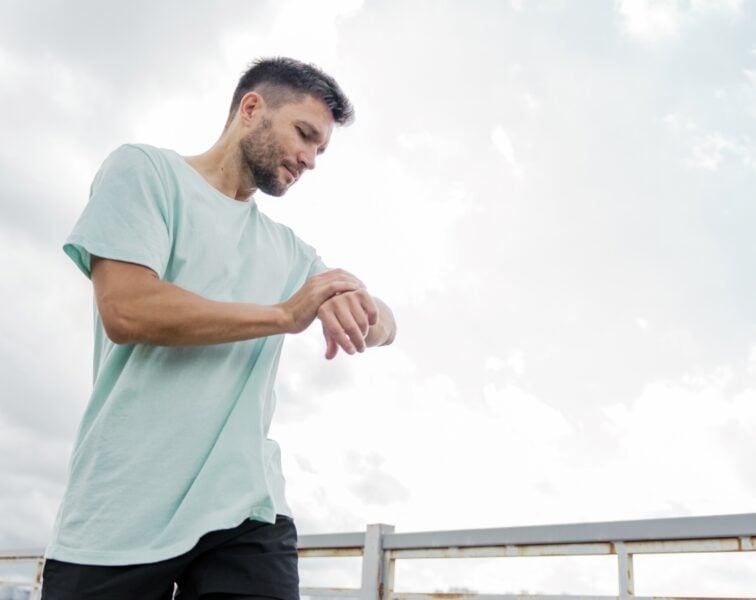Alex Aravanis is a leader in research and development of technologies and clinical tests utilizing the latest tools in DNA analysis and data science. In this episode, Alex delves into two interconnected topics: liquid biopsies and epigenetics. He begins by tracing the trajectory of genome sequencing and tumor sequencing, setting the stage for a detailed exploration of liquid biopsies as an early cancer detection method. The discussion encompasses key concepts such as cell-free DNA, DNA methylation, sensitivity, specificity, and the predictive values associated with liquid biopsies. Transitioning to epigenetics, Alex examines the intricate interplay of DNA methylation and aging biology and explores the possibility of using cellular reprogramming to reverse epigenetic changes that occur with aging.
Subscribe on: APPLE PODCASTS | RSS | GOOGLE | OVERCAST | STITCHER
We discuss:
- Alex’s background in applying engineering to problems in medicine [3:15];
- A primer on human genetics, and the history and current landscape of DNA sequencing [11:00];
- The advent and evolution of liquid biopsies for early detection of cancer [23:15];
- The role of cell-free DNA in cancer detection: how incidental findings in non-invasive prenatal testing led to the development of liquid biopsies [40:15];
- The development of a universal blood test for cancer detection, and a discussion of specificity of tests [46:00];
- Advancements in cell-free DNA analysis and development of a multi-cancer screening test at GRAIL [51:00];
- DNA methylation explained [58:15];
- Optimizing cancer detection with methylation analysis of cfDNA in small blood samples [1:02:45];
- The importance of understanding sensitivity, specificity, positive predictive value, and negative predictive value in cancer screening [1:08:00];
- The performance of the GRAIL Galleri test and its ability to detect various types and stages of cancer [1:21:00];
- Do early cancer detection methods, like liquid biopsies, translate to improvement in overall survival? [1:27:45];
- The role of epigenetics in aging [1:39:30];
- How cell-free DNA methylation patterns can help identify a cancer’s tissue of origin [1:45:30];
- Cellular and epigenetic reprogramming, and other exciting work in the field of aging [1:52:30]; and
- More.
Get Peter’s expertise in your inbox 100% free.
Sign up to receive An Introductory Guide to Longevity by Peter Attia, weekly longevity-focused articles, and new podcast announcements.
Alex’s background in applying engineering to problems in medicine [3:15]
- Peter and Alex both started med school together
- One of the things Peter remembers when they first met was that they clicked over the fact that they both were engineers
- They had a good group of friends, and not of them was a pre-med
- They all followed a non-traditional path to medical school
- Alex came to Stanford University as an electrical engineer and did a Ph.D. in the lab of Dick Tsien, a very prominent scientist
Tell folks a little bit about what you did in that work and what it was that got you excited enough about science to deviate off the traditional MD path
- Alex did his Ph.D. in electrical engineering
- Stanford has a cool configuration on the campus where the engineering school is literally across the street from the medical school
- Over time, he became more and more interested in applying signal processing techniques (circuit design, imaging, AI, things like that) with the problems in medicine that were more interesting than some of the traditional engineering products
- Alex met world-famous neuroscientists
- Dick Tsien, who’s very interested in fundamental questions about the quantum unit of communication in the brain (which is the individual synaptic vesicle)
- And there was a question of just what did it look like and how did it operate?
This was the beginning applying these engineering tools to really important questions in biology and helping answer them
- That first story was a great article in Nature where we definitively answered the question of how that quantum is transmitted between cells, and then we went on to do several other projects like that
How is that information transmitted?
- Alex explains, “It was really fun to come at these problems with an engineering and communications background, but if you look at a central neuron on the brain and you look at the rate at which information is transferred, it seemed to be much faster than the number of synaptic vesicles in the terminal.”
- There’s only 30 synaptic vesicles in the terminal by an electron microscope, yet you’re seeing hundreds of transmissions over a few seconds
- So how is that possible?
- There were various theories
- There was an individual vesicle that was fusing and staying fused and pumping neurotransmitters through it without collapsing
- And that’s how you could get these much more rapid pumps
- We came up with a cute term called “kiss and run,” to explain the phenomenon
- It helped answer this fundamental question of question of how did the brain get so many small neurons yet able to transmit so much information per individual connection
- Peter points out that one of the benefits of Alex doing his Ph.D. at Stanford, in Tsien’s lab was that he overlapped with some other really thoughtful folks
- Including Karl Deisseroth, a previous guest on the podcast [episode #191]
During your Ph.D., what were the most important things you learned philosophically (not necessarily technically) that are serving you in the stuff we’re going to talk about today (liquid biopsies and epigenetics)?
When you think back to your background in electrical engineering, what were the transferable skills?
- 1 – There is a saying in engineering, “If you can’t build it, you don’t understand it.”
- So simply understanding a description of something is not the same as you can build it up from scratch
- You can’t always do that in biology, but you can do experiments where you’re testing the concept of “can I really make it work”
- That was an engineering concept that served Alex well
- 2 – Another, it’s not exclusive to engineering, but was being very first principled: do we really understand how this works?
- In that particular lab, there’s a big emphasis on doing experiments where you always learn something, where regardless of whether or not it confirmed or rejected your hypothesis
- You learn something new about the system
- Don’t do experiments where you may just not learn anything
- That was a very powerful way to think about things
- In that particular lab, there’s a big emphasis on doing experiments where you always learn something, where regardless of whether or not it confirmed or rejected your hypothesis
Fast-forward to circa 2012 when Alex was at Illumina for the first time
Tell folks a little about the company and what you were recruited to do
- Illumina is the largest maker of DNA sequencing technologies
- So when you hear about the human genome being sequenced, things like expression data, RNA-Seq, most liquid biopsies, most tumor sequencing, finding genetic variants in kids with rare disease ‒ most of that is done with Illumina technology
- They also make the chemistries that process the DNA, the sequencers that generate that information, and the software that helps analyze it
- Alex really took that tool from a very niche research technology to standard of care in medicine
- In hundreds of thousands of publications and tremendously it has been advancing science
What attracted Alex to the company and why he was recruited was to help develop more clinical applications and more applied applications of the technology
- The technology had been used by sequencing aficionados for basic research, but it could be used for more
- The company and Alex agreed that it could be used to help every cancer patient, every person with a genetic disease
- The question was: how to develop the technology (and other aspects of it, the assays and softwares) to make that a reality
- That was what Alex was hired to do
A primer on human genetics, and the history and current landscape of DNA sequencing [11:00]
- Peter points out that many take for granted some of the lingo involved with sequencing, but it might be a bit of a black box to some people listening
Explain what was done in the late ‘90s, early 2000s when the human genome was sequenced and how DNA sequencing has changed
A quick primer on human genetics
{end of show notes preview}
Would you like access to extensive show notes and references for this podcast (and more)?
Check out this post to see an example of what the substantial show notes look like. Become a member today to get access.

Alex Aravanis, M.D., Ph.D.
Alex Aravantis earned a BS in Electrical Engineering and Computer Science from the University of California, Berkeley. He then moved to Stanford University where he earned an MS and PhD in Electrical Engineering as well as an MD.
Dr. Aravantis has spent 20 years leading research and development efforts, spanning basic research and technology development through late-stage clinical development. Dr. Aravantis holds more than 30 patents and serves on the scientific advisory board for several biotechnology start-up companies.
He was first recruited to Illumina, Inc. to work in R&D. There he developed multiple technologies, including clinical assays for the analysis of RNA and DNA from fixed tissues, whole exome analysis, massively parallel single cell transcriptomics, and liquid biopsy using cell-free nucleic acids. He was a co-founder of the spin-off company GRAIL, where he led teams developing a multi-cancer early detection test by combining hi-intensity sequencing and the latest tools of data science. He returned to Illumina as the Chief Technology Officer and Head of Research and Development. He focused on using next-generation sequencing to translate genomics to the clinic and accelerate scientific breakthroughs. Recently, Dr. Aravantis left Illumina to start Moonwalk Biosciences where he is leading development of precision epigenetic medicines. [Illumina]



